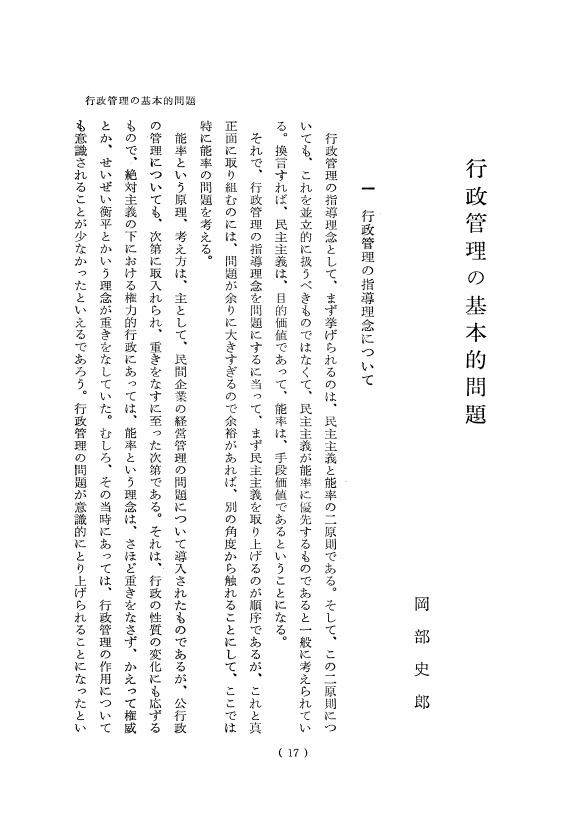1 0 0 0 OA アメリカにおける行政改革の動向 第二次フーバー委員会の報告
- 著者
- 岡部 史郎
- 出版者
- 日本行政学会
- 雑誌
- 行政研究叢書 (ISSN:2187039X)
- 巻号頁・発行日
- vol.1961, no.4, pp.111-143, 1961-10-10 (Released:2012-09-24)
1 0 0 0 OA 行政管理の基本的問題
- 著者
- 岡部 史郎
- 出版者
- 日本行政学会
- 雑誌
- 行政研究叢書 (ISSN:2187039X)
- 巻号頁・発行日
- vol.1957, no.2, pp.17-34, 1957-10-20 (Released:2012-09-24)
The contents of iron, aluminum, silicon and phosphorus contained in particulate matters separated with millipore filter from sea waters sampled in the Western North Pacific, Indian, and Antarctic Oceans have been analyzed. The results indicated that these chemical elements are different in concentration from region to region. In waters of Sagami Bay and Antarctic Ocean near Scott Island and George V Land, which are influenced by the terrestrial waters, the concentration of iron, aluminum, and silicon ranged from 0.5 to 2.0μg at/<I>l</I>. In the Western North Pacific Ocean, Indian Ocean, and Antarctic Ocean far off George V Land concentrations of these elements were below 0.5 μg at/<I>l</I>.<BR>The concentration of phosphorus decreased with depth to about 0.02 μg at/<I>l</I> in all regions.<BR>When the Fe-Al-Si weight percentage for each region was plotted on a triangular diagram, the samples from the Western North Pacific, Indian, and Antarctic Oceans do not resemble clay minerals and pelagic sediments. Only the Fe-Al-Si weight percentage of the sample from Sagami Bay was similar to that in vermiculite and glauconite and pelagic sediments.
1 0 0 0 浜名湖の堆積物コア中の元素の分布と過去1万年間の環境変遷
- 著者
- 南 秀樹 加藤 義久 和田 秀樹 岡部 史郎
- 出版者
- 日本地球化学会
- 雑誌
- 地球化学 (ISSN:03864073)
- 巻号頁・発行日
- vol.29, no.2, pp.85-97, 1995
- 被引用文献数
- 7
Four cores, which penetrated into the Holocene, were collected in 1985-1986 from the center to mouth of Lake Hamana, Japan. Sediments were analyzed for the concentrations of organic C, total N, biogenic SiO<sub>2</sub>, Mg, Al, Fe, Mn, V and P. The age of the sediment near the bottom part of each core, which exhibited a higher C/N mole ratio, changed from 11,000 yr B. P. at the mouth to 7,000 yr B. P. at the center part of the lake. This indicated a higher sedimentation of land plants enriched in carbon, which probably took place during a period of high sealevel. After 4,000 yr B. P. in the inner part of the lake there were some distinctive changes in the distributions of elements, as related to their <sup>14</sup>C ages : (1) higher content and large fluctuations in both the sediment, organic carbon and biogenic SiO<sub>2</sub>, and (2) an excess organic carbon over biogenic SiO<sub>2</sub>. Yet, in contrast, the C/N mole ratio≈12 remained constant. These observations suggested that an eutrophic and productive lake was formed when the seawater exchange was restricted. The contents of Fe and Mg also increased remarkably after 4,000 yr B. P. These changes are due to increasing of the transport ation of particles, originating from ultra-basic rocks carried by the Miyakoda River in the northern part of the lake. Before this period marine silt was predominantly transported from the Pacific sea side.

